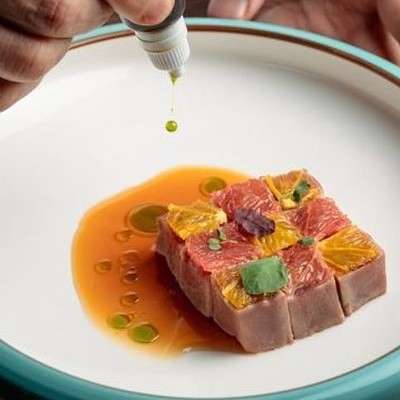While I'm not a full-on advocate of the raw food or paleo eating movements, I have to admit that both have their strong points. Many foods are, in fact, better left uncooked. And some are flat-out best eaten at their most uncooked: when they're still alive.
But I'm not a monster. I can't stomach the viral footage of Chinese fish being eaten while still alive, and I'm not a fan of the Korean practice of eating octopus alive either -- but only because I'm too afraid a suction cup would catch on my throat and kill me.
With moderation in mind, here are the five foods that are best consumed while they're alive.
5. Oysters
Whether you choose to believe new scientific studies that show raw oyster consumption was vital in spurring brain growth in early humans (thanks, omega-3 fatty acids!), you can't deny the fact that this is a food that is terribly good for you. Even vegans agree: oysters are all right. Just exercise common sense when eating oysters: Just as you shouldn't eat a raw oyster that's dead, an oyster has to have been alive immediately prior to being cooked. That, and no eating raw oysters out of our warm Gulf waters in the summer months just to be safe.
4. Clams
You rarely find raw clams down here in Houston aside from sushi restaurants. Witness this pitiful exchange on Yelp, which ended with the statement, "Houston is not known for the freshness of its seafood." Which isn't true; clams on the half shell just aren't as popular here as they are in, say, the Northeast. But you can find them, cropping up on fruits de mer platters at places like Brasserie Max & Julie, and I'm hoping to see clam pop up in more crudo preparations as well. The shellfish's live flesh tastes like an oyster with a lot of chew to it, briny and sweet.
3. Alfalfa sprouts
These sprouts are very high in fiber and other nutrients, but can be dangerous when purchased commercially as they are very prone to carrying bacterial contaminants like salmonella. Instead, try growing your own at home; it's extremely easy to do, requires almost no equipment or experience and can be harvested very quickly. You'll tear or cut them straight from the seeds to your plate, so they're technically still alive while you're eating those crunchy sprouts.
2. Blue cheese
You think your cheese isn't alive? Cheese with mold running through it, like blue cheese, certainly is. Those cheeses are filled with healthy molds like Penicillium roqueforti. Although it's in such a minimal amount that it won't have any affect on your health, the mold helps keep the cheese healthy and protected from bacteria like Staphylococcus.
1. Yogurt
There's a very good reason for eating your yogurt alive: The cultures such as Lactobacillus acidophilus inside yogurt help keep your insides healthy and clean by eating bad bacteria. This has become so commonly accepted that yogurt brands are now marketed on containing "live bacterial cultures," with acidophilus mentioned most often. Which is silly, really, because all yogurt has live bacterial cultures in it. Yes, all yogurt. But there's even cooler news about those bad bacteria-eating cultures: lactose-intolerant folks can usually eat yogurt with no problems, since the cultures eat the lactose too!
Follow Eating Our Words on Facebook and on Twitter @EatingOurWords





